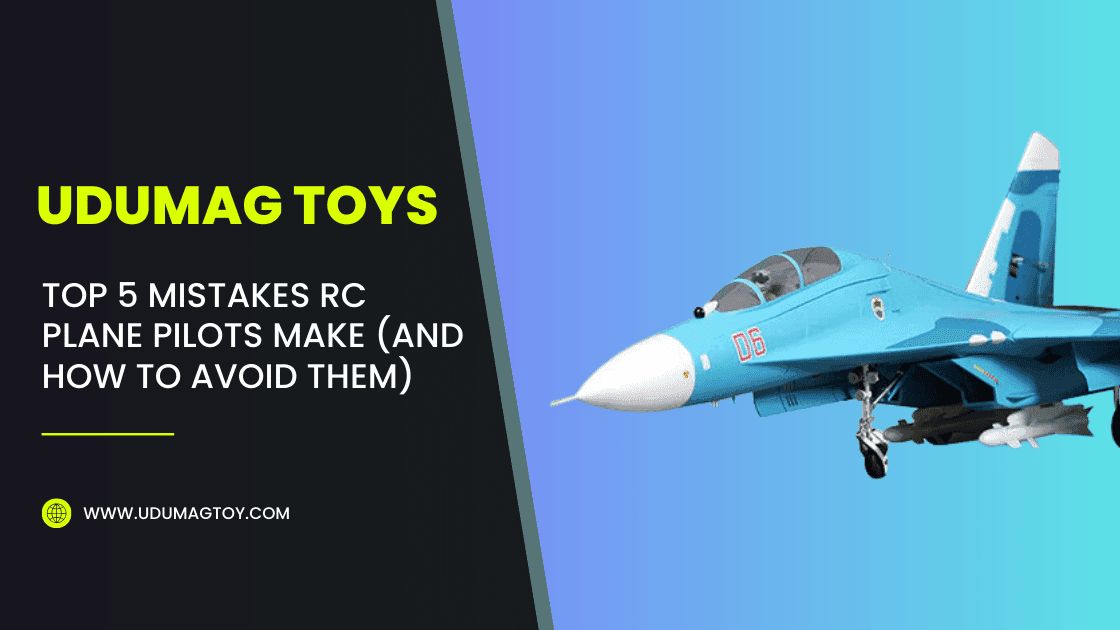The captivating world of RC planes offers unparalleled excitement, but even seasoned pilots can fall prey to common pitfalls. A seemingly minor error can lead to costly repairs or even total loss. This guide will highlight the top 5 mistakes frequently made by RC plane enthusiasts, offering actionable advice to elevate your flying experience. Mastering these fundamentals will transform you from a novice to a confident pilot, ensuring smoother flights and a more enjoyable hobby.
Neglecting Pre-Flight Checks: A Recipe for Disaster
The Importance of Thorough Inspections
Neglecting pre-flight checks ranks among the top reasons for RC plane crashes. According to studies, about 25% of accidents occur due to preventable pre-flight errors. These mistakes can range from overlooking minor damage to failing to check battery levels. The consequences of neglecting critical checks may result in crashes, causing costly repairs or losing your beloved aircraft.
Checklist for a Successful Pre-Flight Inspection
- Visual Inspection:
- Check propellers for cracks or damage.
- Ensure control surfaces move freely without any binding.
- Radio Check:
- Perform a range test to confirm transmitter and receiver connection.
- Test control surface response to ensure everything functions correctly.
Improper Center of Gravity (CG): The Balancing Act
Understanding CG and Its Impact on Flight Stability
The center of gravity (CG) is the point where an RC plane balances. An improperly set CG can lead to unstable flight. If the CG is too far forward, the plane may nose-dive, while a rearward CG can cause it to stall. Understanding CG is crucial for solid flight performance.
How to Locate and Adjust Your RC Plane’s CG
- To locate the CG, follow these steps:
- Place the plane upside down on your hands to find balance.
- Mark the spot, then consult manufacturer guidelines for the ideal location.
- Adjust by moving components like batteries or adding weights.
- A visual diagram can help illustrate this process.
Consequences of Incorrect CG
An out-of-balance plane can lead to various flight issues, such as poor control, increased stall risk, and potential crashes. Safety hazards increase significantly with incorrect CG settings.
Ignoring Weather Conditions: Flying Blind
Wind Speed and Direction: A Critical Factor
Flying without considering wind conditions can be dangerous. For instance, strong winds can make it challenging to maintain control. Pilots should assess wind speed before flying, avoiding gusty conditions that exceed their skill level.
Understanding Turbulence and its Effects
Turbulence occurs when wind flows unevenly, affecting flight stability. Common forms include thermal, mechanical, and wake turbulence, all of which can disturb an otherwise smooth flight.
Weather Forecasting Tools and Resources
Utilize reliable resources for weather forecasts:
- Apps/Websites: SkyVector, Windy, or NOAA Weather.
- Check conditions regularly before heading out to fly.
Poor Radio Control Technique: Losing the Connection
Understanding Transmitter and Receiver Communication
The transmitter sends signals to the receiver, controlling the plane’s movements. Any interruption in this communication can lead to significant issues. Pilots must ensure their equipment is functioning properly.
Developing Smooth and Controlled Stick Movements
Smooth and controlled movements of the transmitter sticks lead to better flight performance. Avoid jerky inputs, as they can cause abrupt changes in flight paths, making the plane hard to control.
Practice Makes Perfect: Refining Your Skills
Start practicing in calm conditions to build confidence. Gradually expose yourself to more challenging flying scenarios. This method helps develop the necessary skills for diverse situations.
Ignoring Battery Health and Management: Power Down
The Importance of Battery Care for Optimal Performance
Proper battery maintenance is critical for successful flight. Use appropriate charging methods as improper techniques can lead to battery failure and crashes.
Understanding Battery Discharge Rates and Flight Times
Ensure you match the battery to the motor specifications. Calculate expected flight times using discharge rates to avoid surprises in the air.
Signs of Battery Degradation and Replacement
Watch for signs indicating the need for battery replacement:
- Swelling or heat during charging.
- Decreased flight time or performance.
- Difficulty maintaining charge.
Conclusion: Mastering the Skies
This guide has highlighted five common mistakes encountered by RC plane enthusiasts. By meticulously following pre-flight checks, understanding CG, respecting weather conditions, mastering radio control, and prioritizing battery care, you can dramatically improve your flying skills and significantly reduce the risk of accidents. Remember, practice, patience, and a commitment to safety are key to enjoying this thrilling hobby for years to come. Happy flying!


 No products in the cart.
No products in the cart.